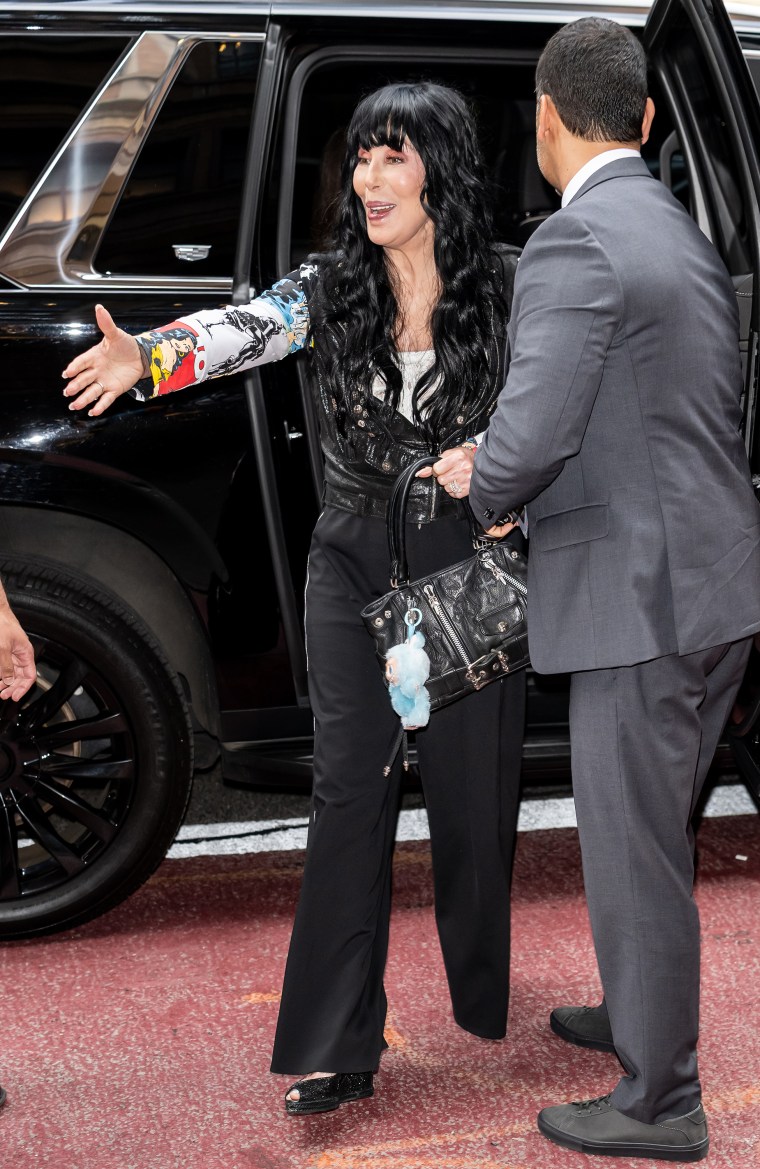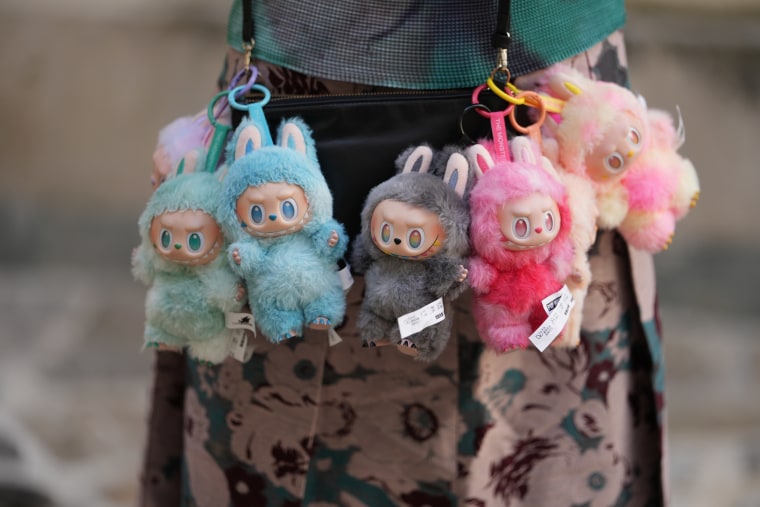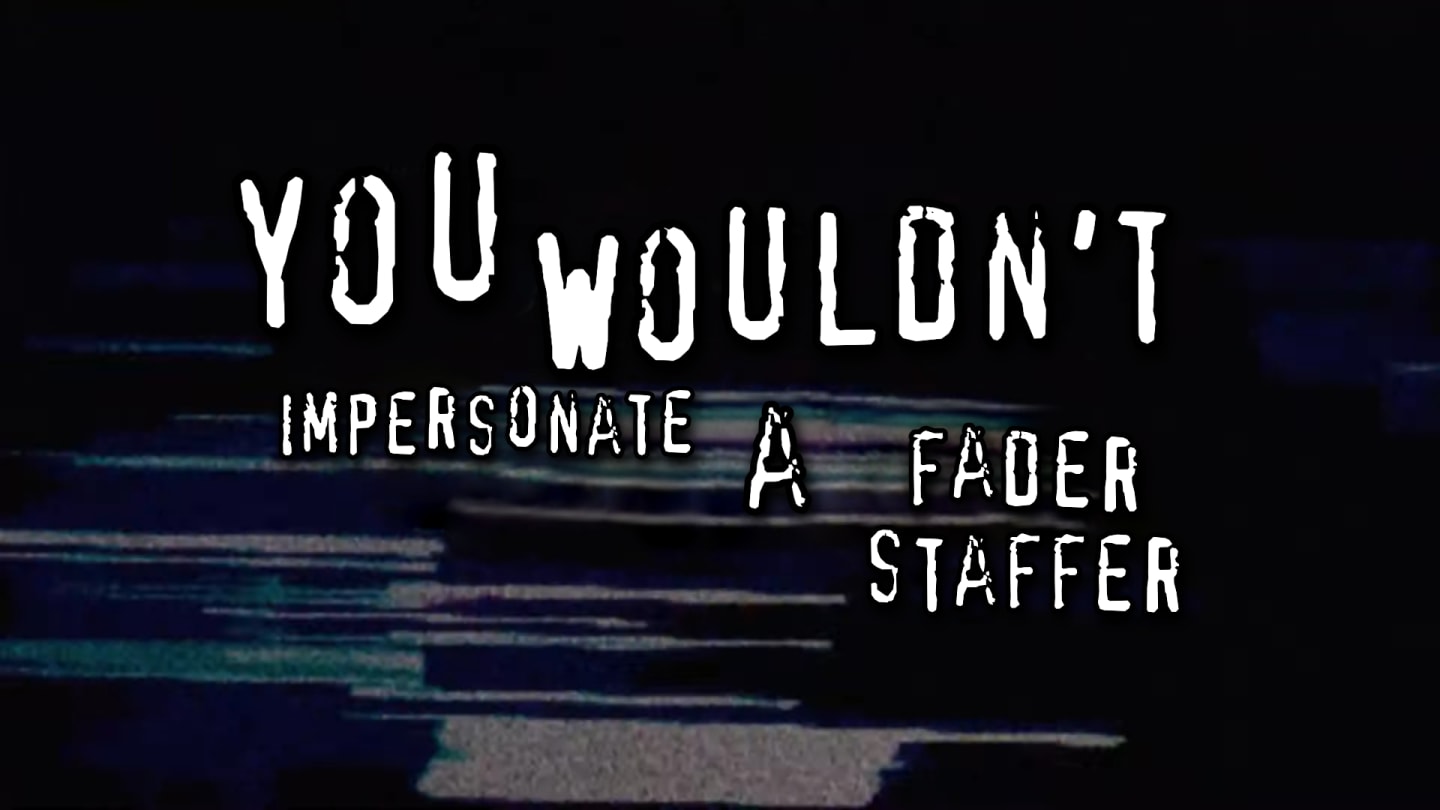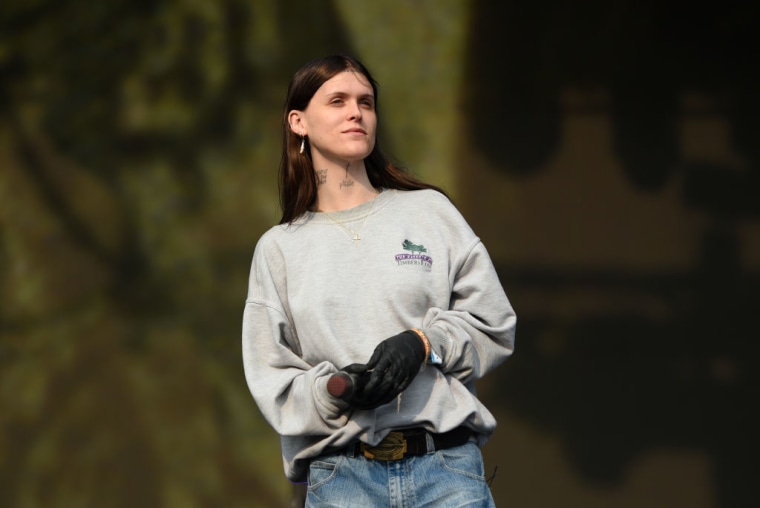Photo by Edward Berthelot/Getty Images
When BLACKPINK’s LISA adorned her $2,600 Kaithe Elena purse with a Labubu in April 2024, I predicted that the freaky toy would become the next big thing. I was right: A year since her Instagram Story post went viral, the fuzzy, wide-grinned, and arguably creepy bunny-like character, designed by Hong Kong-based artist Kasing Lung in 2015 and sold primarily by Pop Mart, is everywhere. Not just K-pop stars but celebrities like Rihanna, Dua Lipa, and even Central Cee have clipped the toothy monsters onto their luxury handbags. The #labubu hashtag on TikTok has amassed over 1.8 million views. It’s now the hottest collectible of all time on the resale platform StockX, per Vogue Business, with a single Labubu blind box going for double to triple its original retail price of $27.99.
Labubu has gone the way of the Sonny Angel craze, which itself is a spinoff of the ’90s-era Beanie Baby obsession. You can boil the popularity of these toys down to Gen Z’s affinity for trends and repackaged nostalgia in sentimental trinkets. Fashion’s recent push for maximalism, the chaotic charmification of accessories on handbags, particularly, also plays a role as brands market playful personalization at a low cost. But to me, the Labubu mania speaks to a bigger issue at play: Collecting culture has lost its grip on everything it stands for, a primary reason I don’t find the push for collectibles as authentic as years before.

Cher with her Labubu.
Photo by Gilbert Carrasquillo/GC Images
I’m not alone in my thinking. Kleigh Balugo, a beauty editor at Hypebae and author of the Substack soft grunge where she writes about collectibles, says that the culture around collecting has changed since her adolescence. While she was growing up, the self-proclaimed kawaii fan and Sanrio collector, who was enlisted into the lifestyle by her mom, was rewarded with trips to the Sanrio store and Hello Kitty-themed birthday parties. “I liked Sanrio and other kawaii characters [even though] people my age looked down on it,” Balugo says, adding that she often felt othered for her hobby by her peers. While the mainstreaming of collecting has removed that “weird teenage shame,” Balugo says the trendiness has diluted other aspects that made collecting feel special.
For Balugo, the fun in collecting lies in its access to a community — whether that’s through social media, contests, or in-person swaps — fueling a bond between devotees and those itching for a trip back to childhood. “The entire reason why fandoms are so fun is because they allow you to reach other people,” she adds. Nowadays, she finds that people are less interested in being members of a larger collective and more focused on capitalizing on momentary hype. “Collecting is no longer about tracking down a holy grail,” she says. “Now, it’s about mindlessly buying every Pop Mart drop or pulling the rarest figure just to resell it for a quick profit, which I think is icky.”
“Labubu mania speaks to a bigger issue at play.”
Rian Phin, a New York-based fashion commentator, sees a different kind of superficial detachment in the way people are buying Labubus. She finds the rise of the toy and its counterparts ironic; the tiny trinkets aren’t serious in nature, but they give the wearer — A-listers and fashion elites, especially — a sense of sartorial authority. An “if you know, you know” indicator, if you will. “[Labubus] are like an ‘It’s not that serious’ or ‘I don’t take myself that seriously’ badge,” Phin explains. “It offsets those all-black outfits with the “right” style signals that make you appear more complex and down-to-earth.” It’s less about the Labubu, and more about what having it says about you.
Phin says that collectibles have more so become a way for consumers to grapple with a fraught political and economic climate and a depletion in purchasing power. Buying toys like Labubus offers a form of escapism, or, in Phin’s words, “anxiety relief in an extremely hostile era.”
To me, the viral push of collectibles points to a universal truth: We all want to stand out. But it’s hard to cultivate a sense of self when the same digital sources dominate the conversation on what the “cool thing” is to be doing right now. Labubu and its friends aren’t solely to blame for the now superficial spirit pervading subcultures like collecting, but they are a symptom of what I believe is a wider individuality crisis. Having a Labubu is FOMO more than anything.




